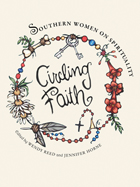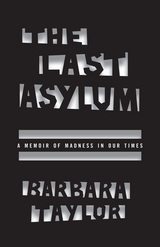3 books by Taylor, Barbara

Circling Faith
Southern Women on Spirituality
Wendy Reed
University of Alabama Press, 2012
Circling Faith is a collection of essays by southern women that encompasses spirituality and the experience of winding through the religiously charged environment of the American South.
Mary Karr, in “Facing Altars,” describes how the consolation she found in poetry directed her to a similar solace in prayer. In “Chiaroscuro: Shimmer and Shadow,” Susan Cushman recounts how her dissatisfaction with a Presbyterian upbringing led her to hold her own worship services at home and eventually to join the Eastern Orthodox Church. “Magic” by Amy Blackmarr depicts a religious practice that occurs wholly outside of any formal setting—she recognizes places, such as a fishing shack in south Georgia, and things, such as crystal Cherokee earrings, as reminders that God exists everywhere and that a Great Comforter is always present. In “The Only Jews in Town,” Stella Suberman gives her account of growing up as a religious minority in Tennessee, connecting her story to a larger narrative of Eastern European Jews who moved away from the Northeast, often to found and run “Jew stores” in midwestern and southern towns. Alice Walker, in an interview with Valerie Reiss titled “Alice Walker Calls God ‘Mama,’” relates her dynamic relationship with her God, which includes meditation and yoga, and explains how she views the role of faith in her work, including her novel The Color Purple. These essays showcase the large spectrum of spirituality that abides in the South, as well as the equally large spectrum of individual women who hold these faiths.
[more]

Eve and the New Jerusalem
Socialism and Feminism in the Nineteenth Century
Barbara Taylor
Harvard University Press, 1993

The Last Asylum
A Memoir of Madness in Our Times
Barbara Taylor
University of Chicago Press, 2015
In the late 1970s, Barbara Taylor, then an acclaimed young historian, began to suffer from severe anxiety. In the years that followed, Taylor’s world contracted around her illness. Eventually, her struggles were severe enough to lead to her admission to what had once been England’s largest psychiatric institution, the infamous Friern Mental Hospital in North London.
The Last Asylum is Taylor’s breathtakingly blunt and brave account of those years. In it, Taylor draws not only on her experience as a historian, but also, more importantly, on her own lived history at Friern— once known as the Colney Hatch Lunatic Asylum and today the site of a luxury apartment complex. Taylor was admitted to Friern in July 1988, not long before England’s asylum system began to undergo dramatic change: in a development that was mirrored in America, the 1990s saw the old asylums shuttered, their patients left to plot courses through a perpetually overcrowded and underfunded system of community care. But Taylor contends that the emptying of the asylums also marked a bigger loss, a loss of community. She credits her own recovery to the help of a steadfast psychoanalyst and a loyal circle of friends— from Magda, Taylor’s manic-depressive roommate, to Fiona, who shares tips for navigating the system and stories of her boyfriend, the “Spaceman,” and his regular journeys to Saturn. The forging of that network of support and trust was crucial to Taylor’s recovery, offering a respite from the “stranded, homeless feelings” she and others found in the outside world.
A vivid picture of mental health treatment at a moment of epochal change, The Last Asylum is also a moving meditation on Taylor’s own experience, as well as that of millions of others who struggle with mental illness.
The Last Asylum is Taylor’s breathtakingly blunt and brave account of those years. In it, Taylor draws not only on her experience as a historian, but also, more importantly, on her own lived history at Friern— once known as the Colney Hatch Lunatic Asylum and today the site of a luxury apartment complex. Taylor was admitted to Friern in July 1988, not long before England’s asylum system began to undergo dramatic change: in a development that was mirrored in America, the 1990s saw the old asylums shuttered, their patients left to plot courses through a perpetually overcrowded and underfunded system of community care. But Taylor contends that the emptying of the asylums also marked a bigger loss, a loss of community. She credits her own recovery to the help of a steadfast psychoanalyst and a loyal circle of friends— from Magda, Taylor’s manic-depressive roommate, to Fiona, who shares tips for navigating the system and stories of her boyfriend, the “Spaceman,” and his regular journeys to Saturn. The forging of that network of support and trust was crucial to Taylor’s recovery, offering a respite from the “stranded, homeless feelings” she and others found in the outside world.
A vivid picture of mental health treatment at a moment of epochal change, The Last Asylum is also a moving meditation on Taylor’s own experience, as well as that of millions of others who struggle with mental illness.
[more]
READERS
Browse our collection.
PUBLISHERS
See BiblioVault's publisher services.
STUDENT SERVICES
Files for college accessibility offices.
UChicago Accessibility Resources
home | accessibility | search | about | contact us
BiblioVault ® 2001 - 2024
The University of Chicago Press









